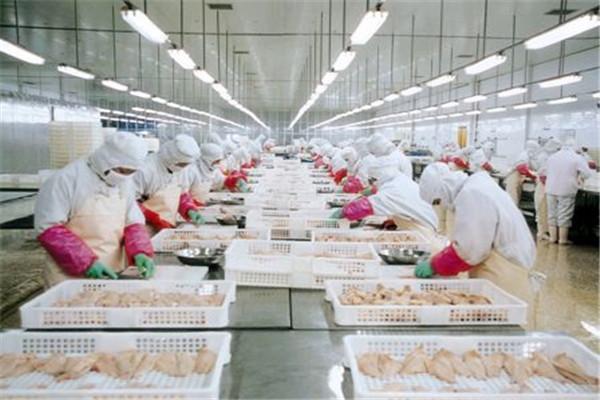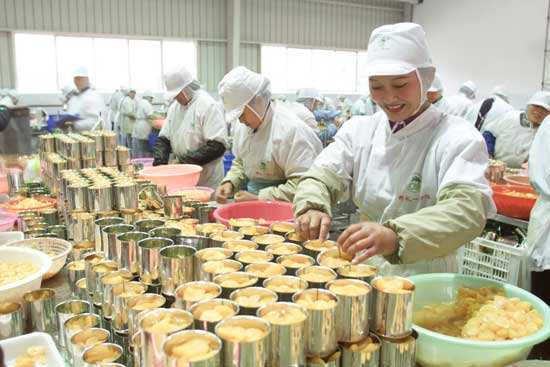How to treatment food wastewater ?
With the continuous growth of the global population and economic development, the food industry has become one of the most important industries in the world. However, the large volume of wastewater generated by food processing not only contains significant amounts of organic matter and nutrients, but also may harbor harmful substances such as heavy metals, bacteria, and viruses. If this wastewater is discharged into the natural environment, it can lead to significant pollution and environmental damage. Therefore, treating food wastewater has become an extremely important task.

一、Food sewage treatment process:
Currently, two primary methods are used to treat food wastewater: physical-chemical treatment and biological treatment. Physical-chemical treatment involves separating pollutants using methods such as precipitation, filtration, and adsorption, while biological treatment utilizes microorganisms to biodegrade organic matter for treatment.
1、physical-chemical treatment
Wastewater flotation treatment: Wastewater is added to a flotation tank, and the pollutants are lifted to the surface using the principle of flotation, and then cleaned and collected. This method can remove suspended solids, oils, and other impurities in wastewater.
Sedimentation treatment: Wastewater is added to a sedimentation tank, and the pollutants are separated by the method of gravity sedimentation, and then cleaned and collected. This method can remove suspended solids, organic matter, and some heavy metal ions in wastewater.
Activated carbon adsorption: Wastewater is passed through an activated carbon bed layer, and organic matter and some difficult-to-treat substances are removed by the adsorption ability of activated carbon. This method is suitable for the removal of organic matter and certain soluble substances.
2、Biologic treatment
Aerobic biological treatment: by adding wastewater to an aerobic bioreactor, pollutants are decomposed into harmless substances such as carbon dioxide and water by the action of oxygen and microorganisms, achieving the purpose of treatment. This method is suitable for wastewater with a high organic content.
Anaerobic biological treatment: by adding wastewater to an anaerobic bioreactor, pollutants are decomposed into biogas, etc. by the action of anaerobic microorganisms, achieving the purpose of treatment. This method is suitable for wastewater containing a large amount of organic matter and sulfide.
Biological contact oxidation: by adding wastewater to a biological contact oxidation tank, pollutants are decomposed into harmless substances by the action of aerobic and anaerobic microorganisms. This method is suitable for wastewater with a high content of organic matter and ammonia nitrogen, etc.

二、Food sewage treatment equipment
Flotation equipment: used for flotation wastewater treatment, mainly including flotation tank, compressed air system, and cleaning system.
Sedimentation equipment: used for sedimentation wastewater treatment, mainly including sedimentation tank, stirring system, and sedimentation basin.
Activated carbon adsorption equipment: used for activated carbon adsorption wastewater treatment, mainly including activated carbon adsorption bed, dosing system, and recovery system.
Aerobic biological treatment equipment: used for aerobic biological treatment of wastewater, mainly including aerobic reactor, aeration system, and mixing system.
Anaerobic biological treatment equipment: used for anaerobic biological treatment of wastewater, mainly including anaerobic reactor, aeration system, and mixing system.
Biological contact oxidation equipment: used for biological contact oxidation wastewater treatment, mainly including biological contact oxidation pond, stirring system, and mixing system.
三、Principles of food sewage treatment
For physical and chemical treatment, the main approach is to separate pollutants from wastewater using different separation principles to achieve treatment objectives. For example, the air flotation wastewater treatment utilizes the air flotation principle to lift the pollutants to the surface of the tank, the sedimentation wastewater treatment uses gravity to settle the pollutants to the bottom, and the activated carbon adsorption wastewater treatment uses the adsorption ability of activated carbon to separate pollutants.
As for biological treatment, it decomposes organic matter into harmless substances through the metabolic action of microorganisms. For example, in aerobic biological treatment, microorganisms use oxygen to decompose organic matter into harmless substances such as carbon dioxide and water, while in anaerobic biological treatment, anaerobic microorganisms decompose organic matter into biogas.
Overall, food wastewater treatment requires a variety of processes and equipment to achieve good treatment results. Different treatment methods should be selected for different types of food wastewater to achieve the best treatment effect. During the treatment process, various parameters such as temperature, pH value, and oxygen content need to be controlled to ensure the normal metabolism of microorganisms and the smooth progress of the reaction process. In addition, regular maintenance and cleaning are required to ensure the normal operation of equipment and the stability of treatment effect.

All in all, food wastewater is a typical industrial wastewater with high concentration, high COD, and high BOD, which poses potential hazards to the environment and human health. Therefore, for food enterprises, treating food wastewater is a very important task. Food wastewater treatment requires the use of various processes and equipment, selecting the best treatment method according to different wastewater situations to achieve optimal treatment effects. At the same time, it is necessary to strictly control various parameters, carry out regular maintenance and cleaning to ensure the normal operation of the equipment and the stability of the treatment effect. Only in this way can the sustainable development of food enterprises be achieved, the environment be protected, and contributions be made to the health and quality of life of human beings.
